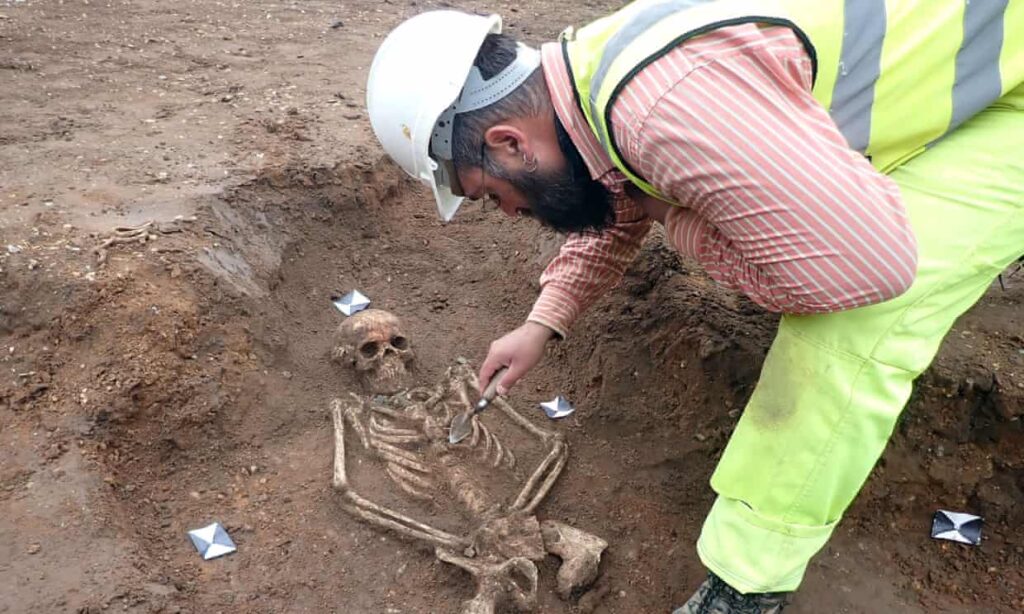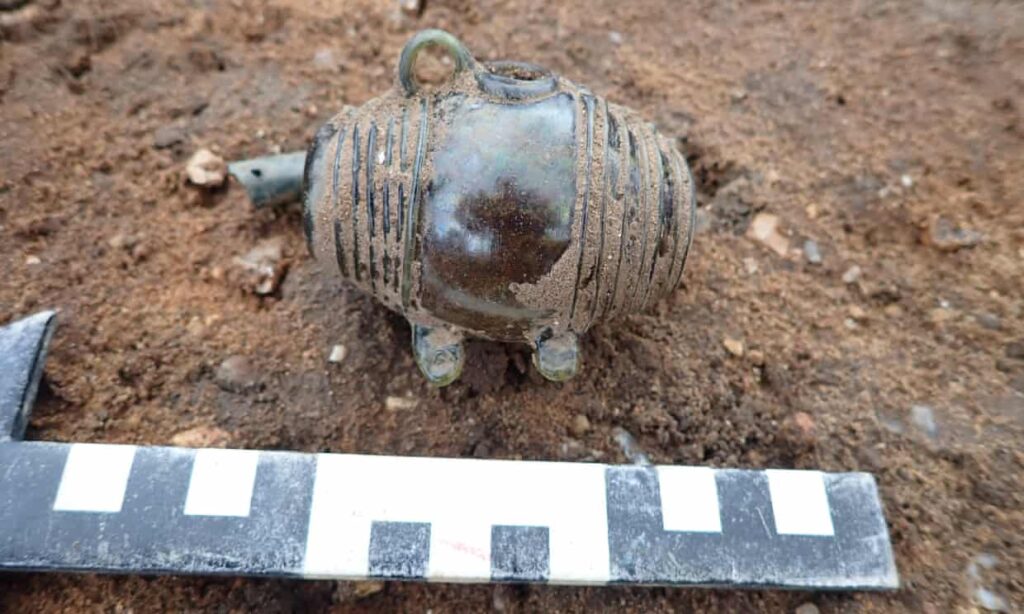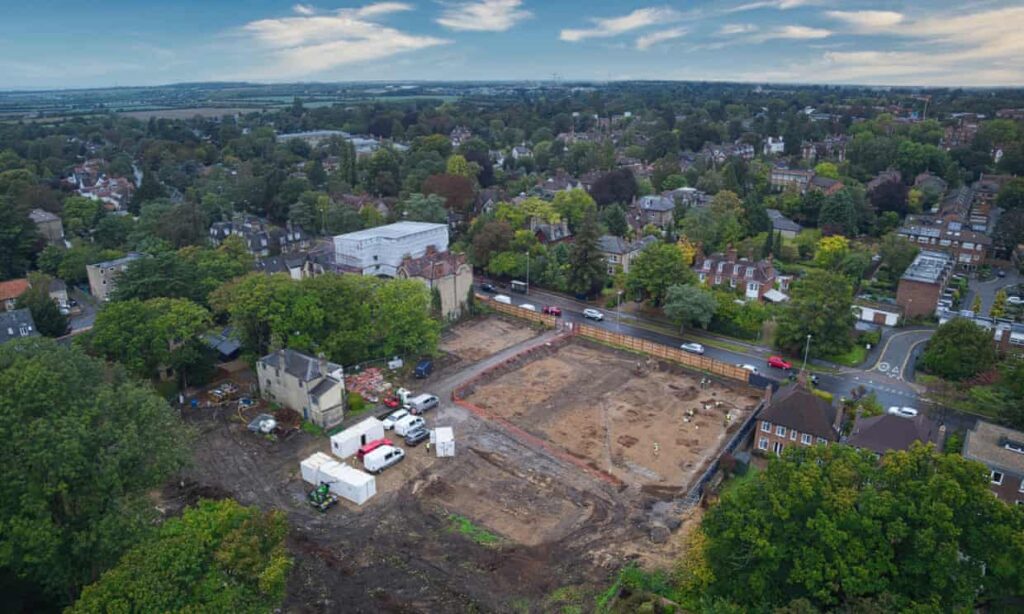‘Find of the century’: a medieval hoard of treasures unearthed in Cambridge
A mediaeval graveyard with an excess of unidentified graves being uncovered underneath student accommodation in Cambridge University is listed as being one of the most exciting discoveries of Anglo-Saxon archaeology since the 19th century.

After demolishing a group of 1930s buildings that had recently housed graduates and employees in the west of the city, King’s College discovered the “extensive” cemetery, containing more than 60 graves, to make way for more modern halls.
Many objects (around 200 items) have been found in the graves, including bronze brooches, bead necklaces, knives, small blades, pottery and glass bottles.

Most date from the early Anglo-Saxon period from 400 to 650, although evidence of iron-age structures and Roman earthworks has also been found. Caroline Goodson, who teaches early medieval history at King’s College, said the human remains they found were remarkably “well-preserved.”
“The alkaline soil, which is typical around here, hasn’t decomposed the bones,” she said.
This is significant because it would enable archaeologists to apply modern scientific techniques to reveal the diet and DNA of the dead, permitting analysis of migration and family relationships.
Goodson said excavators had been “surprised” to find so many graves and such an extensive early medieval cemetery surrounded by Roman ditches and so close to the remains of Roman Cambridge.
According to Bede’s Ecclesiastical History, which was written in the eighth century, Cambridge was abandoned — like many other Roman towns — when the Romans withdrew their military forces from England during the fifth century.
“We already know that Cambridge wasn’t fully abandoned. But what we’re seeing now is a greater and clearer picture of life in the post-Roman settlements,” she said.
Goodson speculated that people living in Cambridgeshire were a mix of descendants from earlier Roman populations and recent migrants to Britain from the continent, living in a post-imperial world.
“They are no longer living as the Romans did, they’re eating differently, dressing differently and finding different ways of exploiting the land. They are changing the way they are living during a period of considerable fluidity,” Goodson said.
Some of the finds throw up questions about the emotional connections people living at the time of the burials might have felt toward the Romans who lived in Cambridge before them.
In one grave, archaeologists found a body buried with what appears to be a late Roman piece of glass shaped like a small barrel for storing wine.
“It looks like a classic Roman object being reused in a post-Roman context, as grave goods,” Goodson said.
Another grave looks like a typical late Roman burial from the fifth century, suggesting there might have been continuity of use of the burial ground from the Roman period onward.
Archaeologists have so far not found “strong evidence” that people living in the sixth century were still choosing to bury their dead near late Roman graves, but few graveyards of this size have ever been scientifically excavated using modern methods and technologies, such as advanced radiocarbon dating techniques and isotopic analysis.

“It would be great to say very clearly — and we’re going to need an ample suite of carbon-14 dates to do this — that we’ve got people using this site from the fifth until the seventh century,” Goodson said. “We can see that the burial of the dead and the treatment of their bodies is particularly significant to living in a way that is different from elsewhere in the post-Roman world.”
That points to a different world view and a different “cosmology”: “It’s a new form of commemoration,” she said.
She hoped to find out whether anyone in the cemetery died of the Justinianic Plague, a pandemic that raged across Europe in the 540s.





